esa
Latest
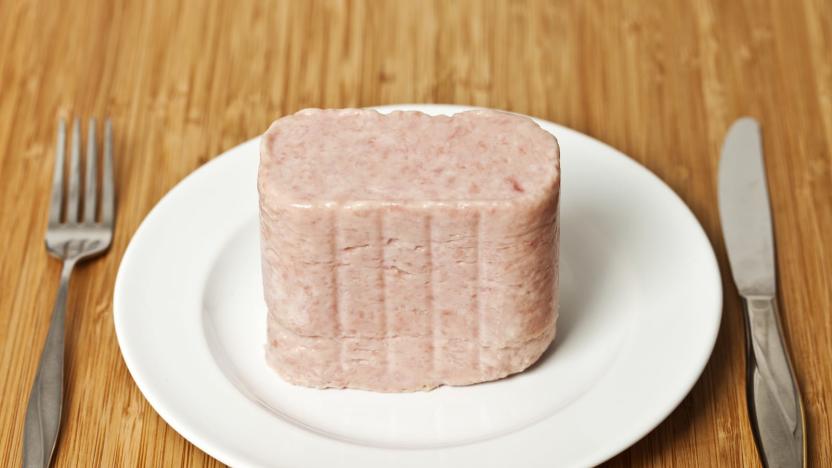
Did AI kill off spam and we just didn’t notice?
I was pwned online recently. My contact information was revealed to the internet by the Entertainment Software Association's leaky exhibitor portal. Luckily, confidential info like my SSN and birthdate were not spilled but I still found myself preparing for the inevitable flood of scams and spam, now that my details were out there for the world to see. But the deluge never came, only a meager handful of Nigerian princes reached my inbox with offers of long lost inheritance. So if internet nefarious scammers have my email address, why isn't my inbox filled with spam? Turns out we have AI to thank for that.

NASA and ESA will team up to deflect Earth-bound asteroids
If humanity is going to stop dangerous asteroids, countries will likely have to work together -- thankfully, that might just happen. NASA and ESA teams are meeting in Rome next week to discuss progress on on the Asteroid Impact Deflection Assessment, a joint research mission to study the viability of diverting an asteroid by crashing a spacecraft into its surface. The project aims to deflect the orbit of one of the two Didymos asteroids between Earth and Mars, with an observer craft gauging the effect of the impact more effectively than ground-based observers could manage.
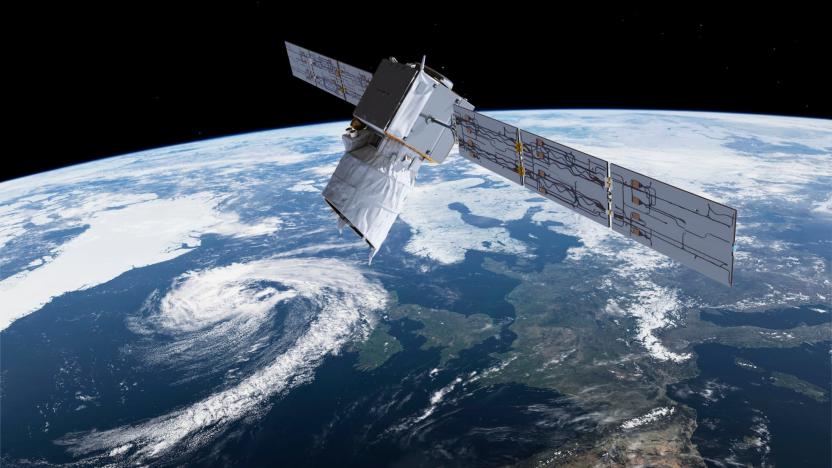
SpaceX wouldn't move its satellite despite collision warning, ESA claims (updated)
There's a high-stakes traffic issue in the space around our planet. The European Space Agency's Aeolus Earth observation satellite had to perform a maneuver to prevent collision with SpaceX's Starlink satellite 44.

Second failure of ExoMars parachute test throws schedule in jeopardy
A joint mission between the European and Russian space agencies to deliver a rover to Mars is facing another setback. The European Space Agency (ESA) confirmed that parachutes for the ExoMars lander mission failed a second test that was conducted last week. A similar trial conducted back in May on the same parachutes also ended up malfunctioning. Scientists observed damages in the canopy in both cases.

E3 data breach leaks info for thousands of registered journalists
Thanks to a staggering bit of negligence on the part of the organization that manages E3, the last and worst "leak" this year affects people from the media who covered the event. As pointed out on YouTube by Sophia Narwitz, a spreadsheet was available on the E3 website listing detailed contact information for over 2,000 journalists, content creators, analysts and others who applied for and received credentials to the event this year. The list apparently existed so that videogame companies could reach news media and content creators they wanted to contact about coverage, but it's obviously not intended to become publicly available. In a statement, the ESA said "Once notified, we immediately took steps to protect that data and shut down the site, which is no longer available. We regret this this occurrence and have put measures in place to ensure it will not occur again." That doesn't do much to help the people who are now at risk for targeted harassment, and, as VentureBeat points out, may cause an issue with Europe's GDPR. Narwitz noted that the list was pulled within hours of the ESA being notified, which was not soon enough to avoid people downloading and spreading the information. ESA: ESA was made aware of a website vulnerability that led to the contact list of registered journalists attending E3 being made public. Once notified, we immediately took steps to protect that data and shut down the site, which is no longer available. We regret this this occurrence and have put measures in place to ensure it will not occur again.
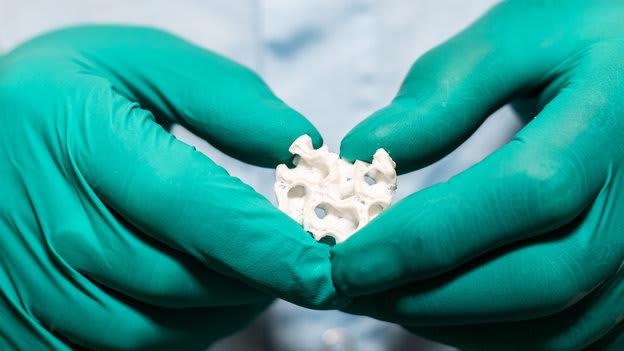
Mars crew could 3D-print skin and bones for injuries
A journey to Mars will take several months, and humans won't be able to turn back if an astronaut suffers a burn or a bone fracture. Which is why scientists at the University Hospital of Dresden Technical University have now produced the first bioprinted skin and bone samples for use in space. Even though treating patients with 3D-printed skin or bones is still in its early stages back on Earth, the technique is particularly vital in space, where the human body doesn't heal as quickly.

European astronauts plan to take pics of a comet from the dawn of time
The European Space Agency (ESA) hopes to photograph a yet-to-be-discovered comet as it approaches Earth's orbit for the first time. To do so, it's developing "Comet Interceptor," a composite made of three individual spacecraft, which will separate to snap photos of the comet from multiple perspectives. The photos will be used to create a 3D model, and ESA hopes to spot material from the dawn of the Solar System.
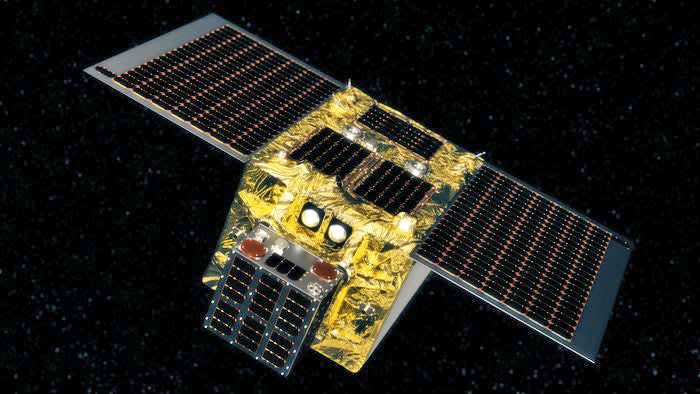
Europe's Space Agency opens its doors to commercial spaceflights
It's not only NASA that is embracing private space flight. The European Space Agency (ESA) is opening its own commercial space program, giving companies the option to take paid trips into orbit.

NASA, ESA will study how artificial gravity can keep astronauts healthy
Astronauts aboard the International Space Station have to exercise and alter their diet to endure extended stays in microgravity, but NASA and the ESA hope to find a better way. They're about to start a study that will explore how artificial gravity might keep astronauts in good shape. Volunteers at the German Aerospace Center will spend 60 days in bed starting on March 25th at an incline that will send blood away from their heads. Once a day, a "selection" of the subjects will take a spin in the Center's short-arm centrifuge in a bid to send blood back toward their legs.

Mars Express orbiter snaps stunning image of Korolev crater
The European Space Agency has released a gorgeous composite image of Mars' Korolev crater, an 82-kilometer-wide crater situated in the planet's northern lowlands. The ESA's Mars Express orbiter snapped pictures of the crater over the course of five orbits, and five "strips" were combined to make this stunning image. The Korolev crater is filled with 1.8-kilometer-thick ice year round, which is believed to be maintained by an occurrence known as a "cold trap." The air moving across the crater's ice cools down, sinks and then acts as a sort of shield over the ice, keeping it cold and frozen all year long.

Does the video game industry need E3?
E3 is not a place for us." Steve Filby handles marketing for Motion Twin, the studio behind Dead Cells, and he's been building and shipping games for the past six years. Dead Cells is one of the hottest independent titles around, following a wildly successful stint on Steam Early Access, where the studio sold more than 730,000 copies in just one year -- before the game was technically finished. It's a bright and sprawling roguelike reminiscent of Castlevania, and since officially launching in August, it's picked up a handful of accolades, including two nominations at the 2018 Game Awards. Dead Cells did all of this without exhibiting at the Electronic Entertainment Expo, or E3, the video game industry's most publicized trade show.
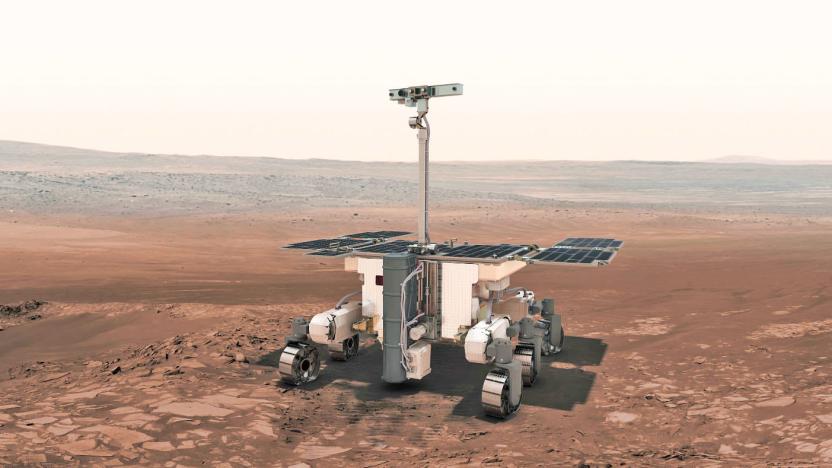
The ExoMars rover may search for life near the Red Planet's equator
Europe and Russia's ExoMars rover has been assigned its destination on the Red Planet. The robot explorer will almost certainly land on Oxia Planum -- a site rich in iron-magnesium clays near the equator -- say scientists from the Landing Site Selection Working Group (LSSWG) in Leicester, UK. They've been discussing touchdown options for around four years and -- with the blessings of the European and Russian space agencies -- this could be the spot. Unless, of course, they change tack and opt for the other site in contention: Mawrth Vallis, which lies just north of Oxia, reports the BBC.

The ESA teamed with Nissan to build an off-road astronomy lab
Nissan unveiled its Navara Dark Sky concept vehicle at the Hannover Motor Show this week, and it's a vehicle designed for astronomers. The truck is an enhanced version of the automaker's Navara vehicle and along with including some handy new features, it also has a trailer in tow that carries a powerful PlaneWave telescope. Designed with the European Space Agency, the trailer not only houses the telescope but has a number of features that protect the telescope and help researchers collect and transmit data.
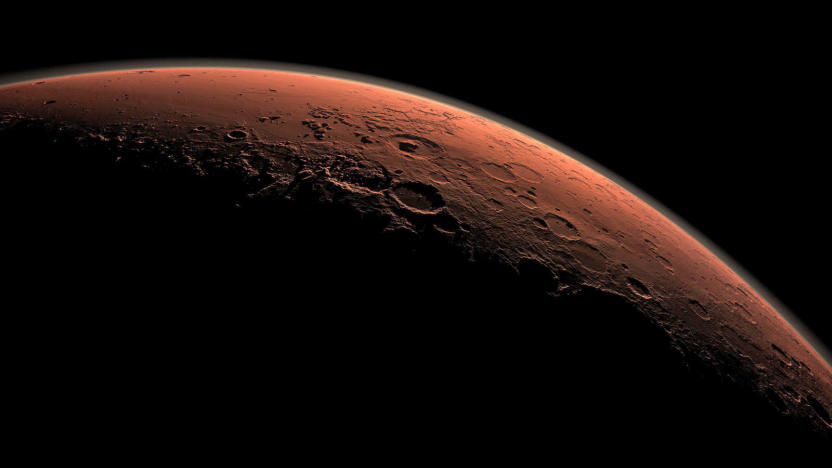
Mars trips may involve less radiation exposure than previously thought
There's no question that the first human mission to Mars will be extremely dangerous. Some studies have suggested that the radiation levels would exceed the maximum career dose for a given astronaut, greatly increasing the risk of cancer and other illnesses. It might not be quite so bad as it sounds, though. Newly presented ESA ExoMars orbiter data indicates that astronauts would receive "at least" 60 percent of their maximum recommended career radiation exposure on a round trip to Mars that takes six months both ways. That's still several times what ISS crew members receive, but it's relatively gentle compared to what some had feared.
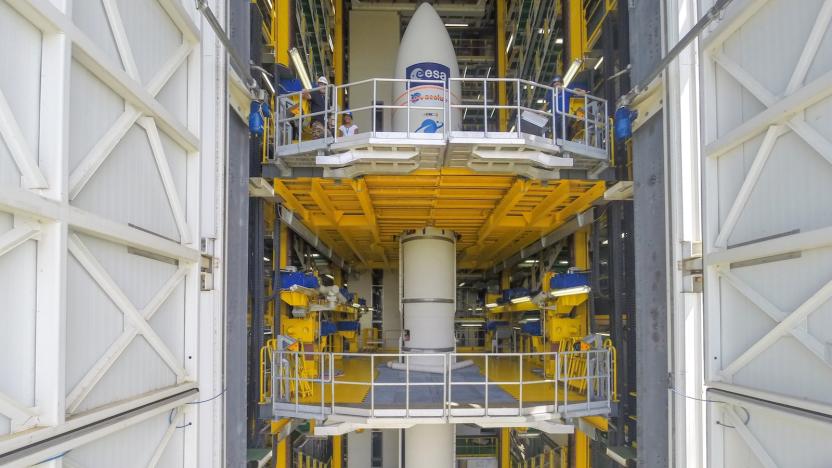
Watch the ESA launch its wind-mapping Aeolus satellite at 5PM ET
The European Space Agency is launching its Aeolus wind-mapping satellite today from the Guiana Space Center in Kourou, French Guiana. Once in orbit, Aeolus will measure winds from the Earth's surface up to the stratosphere using powerful lidar technology, and it will do so on a global scale. The data Aeolus collects will help improve weather forecasting and provide valuable information for climate change research.

Scientists may have found liquid water on Mars
Today, scientists announced that they have detected what could be a large reservoir of liquid water under the surface of Mars. The "lake" measures 20-km across and is located about 1.5 km below Mars's southern polar ice cap. An article about the discovery was published in the journal Science.
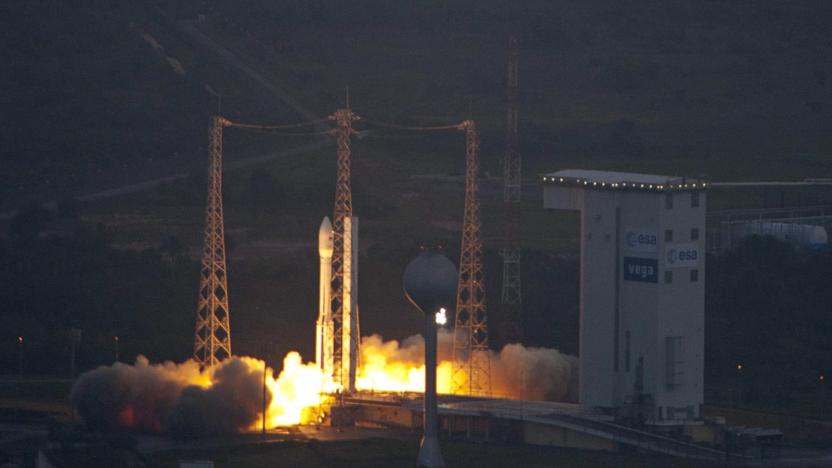
The largest-ever solid rocket engine is ready for its first static fire
This week, the European Space Agency (ESA) will perform a hot fire test on the P120C rocket engine. It is the largest-ever solid rocket motor ever built in one piece. The ESA plans to use it on the Vega rocket, replacing the current first stage booster, as well as the upcoming Ariane 6, scheduled to launch in 2020.
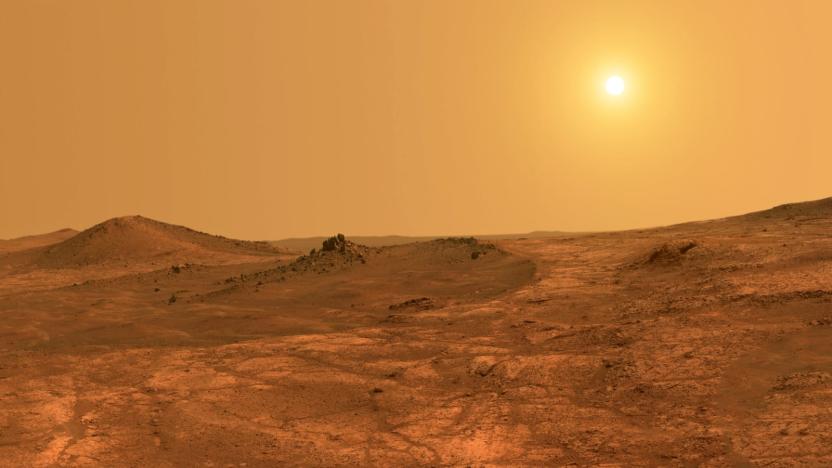
Airbus is designing a Mars rover to return soil samples
Back in April, NASA and the European Space Agency (ESA) agreed to figure out whether it's possible to bring Martian soil samples back to Earth. Now, the ESA has granted Airbus a $5.2 million contract to design a concept for a rover that can collect those samples on the red planet. The space agency has chosen Airbus' team in Stevenage, England, because they're already building the ExoMars rover that's scheduled to head to our neighboring planet in 2021. Unlike ExoMars and all its scientific instruments, the fetch rover's lone task is to find and collect the canisters of samples NASA's Mars 2020 rover prepares and leaves behind. However, that doesn't mean that designing the vehicle would be easy.
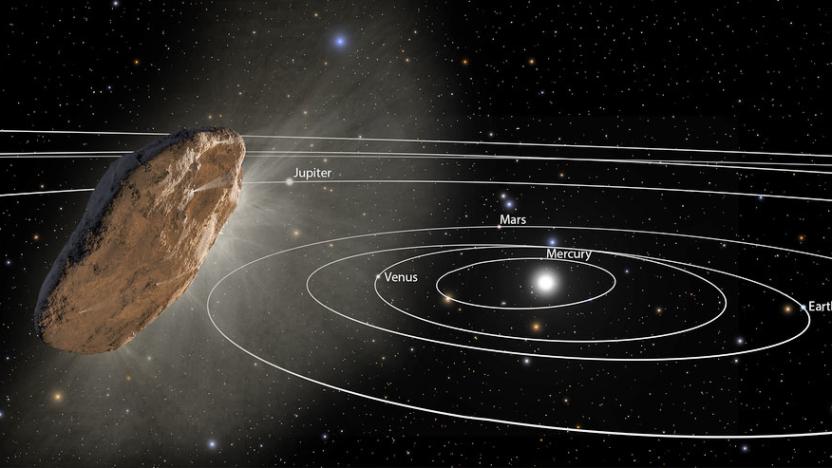
Turns out the interstellar object ‘Oumuamua is a comet after all
Last October, researchers spotted a long, skinny object speeding through our solar system, and they initially pegged it as a comet from another solar system. But as they continued to observe the object, dubbed 'Oumuamua, its properties -- namely a lack of gas and dust surrounding it -- pushed it into the asteroid category, instead. Asteroids are mostly rock, while comets contain ice that becomes visible as it's vaporized into gas and pulls dust off of the comet's surface. However, researchers have kept their telescopes pointed at 'Oumuamua and additional observations have now earned the object a comet label once again.

A Stephen Hawking musical tribute was beamed directly at a black hole
The European Space Agency had its own special way of marking a memorial service for astrophysicist Professor Stephen Hawking. At the same time his ashes were interred at Westminster Abbey in London, the ESA beamed music featuring Hawking's famously synthesized voice towards the closest-known black hole.











